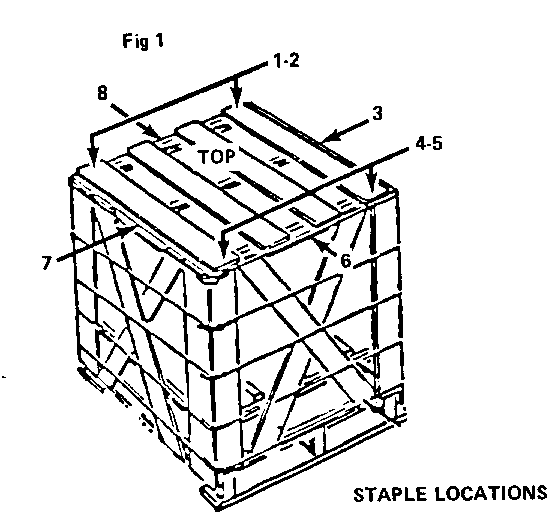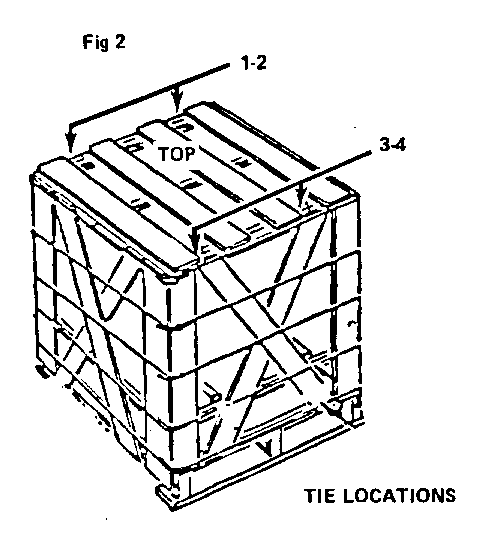REMANUFACTURED DIESEL ENGINES APPLICATION AND P/N'S

1978-1981 C1 PICKUPS AND 1983-1984 CABALLEROS WITH 5.7L V8 DIESEL ENGINES
Effective June 1, 1985, WDDGM will be offering 5.7L V8 Goodwrench diesel engines that are remanufactured for General Motors. These engines are identical to the Goodwrench diesel engines previously offered. The remanufactured Goodwrench diesel engines are built to the same requirements for clearances, torques and specifications as new engines. All seals, bearings, pistons, and rings in these engines are new. All engines contain roller lifter valve trains and incorporate all refinements contained in new production engines.
ENGINE USAGE
DESCRIPTION AND USAGE OF REMANUFACTURED 5.7L V8 DIESEL ENGINE ------------------------------------------------------------- P/N P/N P/N P/N 22531736 22531794 22531796 22531740
Caballero - - - 1983-84
Light Duty 1978-79 1981 1981 Truck -80 California Except - California
Pencil Poppet Pencil Poppet Nozzle Nozzle Nozzle Nozzle Extemal Intemal No EGR Intemal EGR EGR EGR
ENGINES THAT CANNOT BE RETURNED FOR CORE CREDIT
A core return policy is being announced by WDDGM. This policy requires that you purchase a remanufactured engine which contains a core charge before you are eligible to return an engine for core credit.
You may have engines in stock that you did not pay a core charge on, and therefore, are not eligible for a core credit. The core, however, may be purchased by the remanufacturer.
If you have cores that are not eligible for the $200 core credit, call Mr. Robert Bigos toll free at 1-800-772-7733 outside of Missouri; in Missouri call him at (417) 862-3501. If the remanufacturer has a need for the core, you will be paid $50 for the core if properly packaged as outlined below. Details for shipment, payment, etc., will be explained at the time of your call.
PACKAGING REQUIREMENTS FOR DIESEL ENGINE CORE RETURN
The diesel engine core is to be returned in the same package that the new engine is received. It is essential that the new engine be removed from the package without damaging or breaking the wooden boards.
A change in the packaging of new engines is being made that will make it very easy to remove engines without damaging the package. Until the change is made, care must be exercised not to damage the package by following these instructions.
LID REMOVAL
1. Remove the lid from the package Redesigned packaging will have wire ties at each corner which can be easily removed. The old packaging requires the removal of staples as follows:
A. There are eight staples that go into the top. Four from the top and four from the side. See Figure No. 1.
B. Open four of the wire bails on the side of the crate. Pull or pry out the side of the crate until the staple pulls out through the end of the board on top. (The end of the board will split - this is OK.) Then reach in and cut staples on each of the open sides. By prying up and outward on the lid, the staples on all sides can be cut until the lid is removed.
The diesel engine core is to be returned in the same package as the new engine is received. The following is to be noted:
1. Any leak of coolant or engine oil that is more than an occasional drip should be corrected by draining the fluid.
2. Transfer the plastic plugs and cover the intake by using the materials from the new engine.
3. Transfer the lift strap and the two plastic shims from the front of the left hand cylinder head.
4. Place the plastic bag in the base and set the engine into the crate. Wrap the plastic bag around the engine and tie the open end.
5. Attach the engine to the base by reinstalling the bolts into the engine through the two retaining straps.
6. Place the lid on the crate and wire the lid to the sides in four locations as shown in Figure No. 2. Use wire that is about as heavy as used on the sides of the crate. If a lighter wire must be used, wrap it around the lid and sides several times so that the wrap is equivalent to the heavier wire.


General Motors bulletins are intended for use by professional technicians, not a "do-it-yourselfer". They are written to inform those technicians of conditions that may occur on some vehicles, or to provide information that could assist in the proper service of a vehicle. Properly trained technicians have the equipment, tools, safety instructions and know-how to do a job properly and safely. If a condition is described, do not assume that the bulletin applies to your vehicle, or that your vehicle will have that condition. See a General Motors dealer servicing your brand of General Motors vehicle for information on whether your vehicle may benefit from the information.
